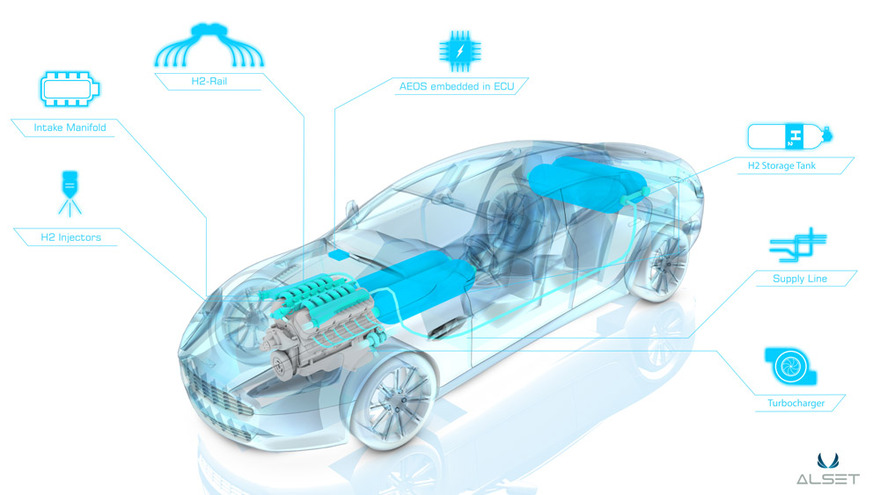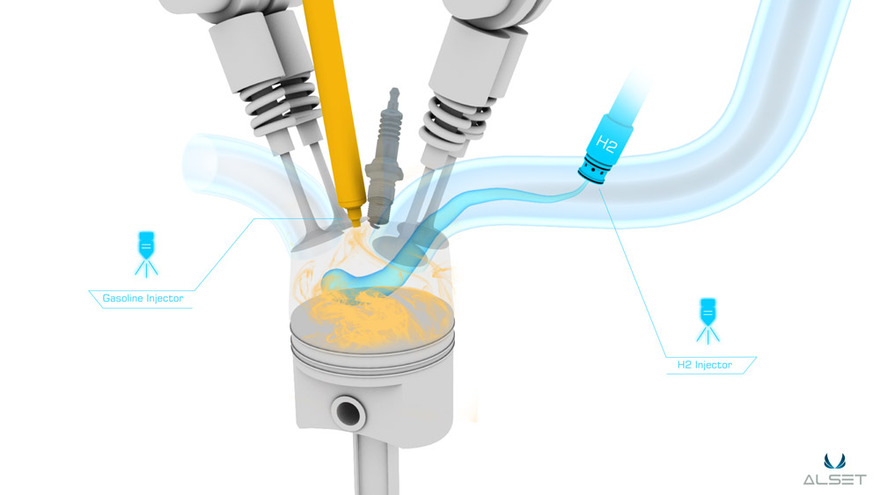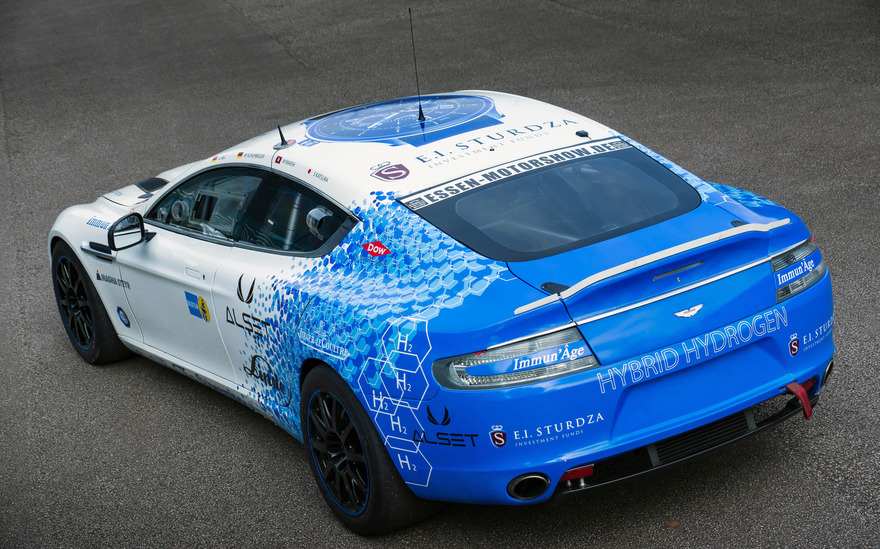Can water be used instead of fuel? It turns out it can, but it’s not regular H2O. Two variants are possible: water-methanol mixture or hydrogen.
The first variant, also known as Brown’s gas, has been used by the German and American engineers since the second half of 20th century in combustion engines. Thanks to water the engine receives an additional impact which can be compared to the effect of a turbocharger: due to incomplete fuel burning the efficiency of a regular combustion engine is rather low — only 40% of energy is used to power the work of the mechanical car units and the rest of heating energy just simply dissipates or leaves the car together with the “ecologically clean” exhaust.
“Water gas”, exhaled during electrolysis as a result of water splitting, improves the process of burning in the engine. Active combustion reduces polluting emissions into the atmosphere due to a more complete burning of CO carbon oxide and CH hydrocarbons. This also lowers down the consumption rate of the car and improves its power performance.
The second variant of using water for powering the car is to split the molecule of water into components — two hydrogen atoms and one oxygen atom. Hydrogen is the all-sufficient fuel for a car but there are issues concerning the problem of hydrogen storage and unreasonably high energy consumption (the amount of energy necessary for splitting water molecules is comparable to the amount of heat produced by the engine which has a zero effect all in all).
However, in 2002 the Canadian engineers managed to create a technology of formation hydrogen out of water with the help of a system preinstalled in the car. Water mixed with electrolyte fluid reacts with a special alloy combination and starts an active exhalation of hydrogen which in turn proceeds into the manifold and then to the carburettor of the combustion engine. In such case there is no need for fuel elements, batteries and fuel stations.
In spite of reports that the ecological situation on our planet gets worse each year and it turns out that we don’t have that much of fresh water (on the scale of further development of the civilization and humanity), the engineers suggest using the water received from melting ice meaning there are ways of developing “water” fuel available.
Aston Marin, the British company with 100 years of experience in car manufacturing, treats the environment with respect. A premium car Hybrid Hydrogen Rapide S is a perfect demonstration of this fact. It was designed to convince the whole world that an ecologic car can also be very fast.
Although the car does not have an electric engine, Aston Martin markets this model as a hybrid as it is powered by two types of fuel — petrol and hydrogen.
Hybrid Hydrogen Rapide S became the first vehicle propelled by hydrogen which took part in the 24 hours of ADAC Zurich Nürburgring — the international race which was held in Germany on May 19–20, 2013. It was also the first time when a car completed a full Nürburgring lap with zero CO2 emission level. The car entered the competitions in the E1-XP class (experimental cars which run on alternative types of fuel) and started from the 83rd position (out of 200) with one major goal which was eventually attained — to finish the race. The current CEO of Aston Martin Ulrich Bez was among pilots.
The Rapide S model of Hybrid Hydrogen was upgraded in January 2013 for participating in races. It was initially built on the base of the legendary 4-door Rapide model which has been produced since 2006. It now has the ecological 6-litre12-cylinder turbo-charged engine (“good old V12” as you might call it) with the power increased up to 507 hp and the maximum torque reaching 800 Nm. It has a unique potential of running on hydrogen, petrol or even their mix. The standard Rapide S model produces 557 hp with the maximum torque of 620 Nm.
Hybrid Hydrogen has also received an additional hydrogen fuel line with its own injectors, a new engine control unit which can flexibly vary the composition of fuel mixture, and of course containers for hydrogen instead of the usual metal container. Engine upgrading was performed together with the Austrian company Alset Global which is working on developing hydrogen technologies.
Here’s how it all works: compressed hydrogen enters the engine out of one of four supertough carbon storage tanks, a specially developed intellectual fuel feed control system either saves on fuel consumption if necessary or increases the power of the engine reducing carbon dioxide emissions into the atmosphere. Pure water comes out of the exhaust pipe while driving. Hydrogen storage tanks (two in the luggage compartment and two situated near the driver) can store around 3–3.5 kg of gas at 350-bar pressure. Top speed reaches 305 km/h, 0 to 100 km/h takes 4.9 seconds. In spite of power increase the consumption rate and the level of carbon dioxide emission have decreased.
The design of the car has not changed: it still has the same radiator grill, mouldings on rear-view mirrors, a spoiler on the boot lid like in 2013 Rapide S. The environmental friendliness of the car is revealed only by a small label located on the windscreen with the Hybrid Hydrogen words there.
Aston Martin company is not planning to start mass-production of hydrogen-powered cars but it assumes that this technology has great potential and that’s why the company will support further research in this field.














